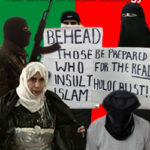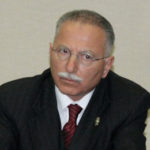By Alyssa A. Lappen
FrontPageMagazine.com | October 7, 2005
On June 5, 2002 a suicide bomber rammed his car into the rear end of Egged bus No. 830 to Tiberias at the Meggido Junction near Tel Aviv. The attack killed 17 people, one of whom remained unidentified for months. Despite the thousands of suicide and other terror attacks in Israel over the last 57 years, this was the first time a victim remained unidentified. Eden Productions film director David Ofek, photographer Ron Rotem and producer Elinor Kowarsky decided to pursue the story.
The result, No 17 is Anonymous, is a sympathetic, warm 2003 film showing the difficulties of Israeli life under the shadow of death. Its success hinges on the detective investigation undertaken by the filmmakers, who in the process of uncovering the identity of the 17th man, tell the everyday, tragic-comic stories of several Israelis affected directly or indirectly by the Meggido bombing.
Where the victims sat on the bus–and when they disembarked–determined the difference between life and death. The story gives names, faces, flesh and bones to the living and dead alike. The victims were all people. Their lives were torn apart by the blast. But the death of the 17th man was especially tragic: his face was completely burned away by the explosion; His charred remains had no recognizable features left whatever.
One will not find this film at most film festivals, where pro-Palestinian films rule the Middle East selections. Thankfully screenings like the September 27 New York showing by the Safra Synagogue and the Committee on Accuracy in Middle East Reporting, however, present films with a fair and evenhanded viewpoint.
At first, the filmmakers have nothing to go on but the sparse descriptions given by Israel’s National Forensic Institute. The individual was male, aged 40 to 50 and stood 1.7 meters tall. Two weeks after the Meggido bombing, no one has come forward to claim him, and he had no personal effects that might help to identify him. The funeral director, Shaike Karib, puts film director David Ofek in touch with a former Israel Defense Force officer with experience in finding missing persons. He explains how to plot the seats in the bus. As the film unwinds, the producers fill the seats on their chart with pictures of the victims–black and white for the deceased, and color Polaroids for the survivors of the attack, whom they interview one at a time.
The filmmakers’ success in their investigative mission ultimately turns on help from two survivors–the bus driver and a passenger surveyist–as well as Gil Gibli, a forensic artist for Globes newspaper, who constructed a composite of the 17th victim from the descriptions given by these two witnesses who remembered him. The woman surveying passengers had ironically boarded the wrong bus (and thankfully disembarked when she realized her mistake).
Gibli, an Orthodox man who “discovered Judaism” well into his adulthood, seems an unlikely forensic artist, but his skill–and humor–are both uncanny. He begins by zeroing in on facial shapes. He asks witnesses to choose between oval, triangular and round types. Having narrowed the field to a round shape, he focuses on expressions and distinguishing features. How did the man talk, how did he walk, was he friendly or reserved, and so on. The answers guide his drawing, which–amazingly–comes to closely resemble the subject described.
Meanwhile, the filmakers give flesh, bones and names to the victims through the survivors’ accounts. A young soldier describes where he was sitting, his father’s death on the bus, and his own sense of fear and ultimate survival. A Russian family miraculously escapes harm; the young man’s mother and grandmother return tearfully to Russia from their visit to Israel, fearful for the son’s future safety.
The bus driver describes the people getting on and off. He’s observant and warn–with an eye for details and a love for his work. The passenger surveyist, obviously moved by the number of people killed and the details about each one, literally acts out the way in which she moved down the aisle to where number 17 sat.
Following the moving film, its point was poignantly driven home by a talk from Diana Campuzano, a survivor of the September 4, 1997 attack at the crowded Ben Yehuda pedestrian mall in Jerusalem. “Oh my God, there’s a guy dressed in drag,” she thought to herself just before everything “went dark,” she said. “I was on the ground, my feet and hands were numb, and there was a huge hole in my forehead, with jagged edges like sharp teeth. My vision turned red as blood filled my eyes.”
Campuzano has had 10 surgeries to restore her vision, which is permanently damaged in one eye. “I can see,” she says, but you [the audience] are completely blurry. My left ear drum was destroyed.” Her nose and sinus cavity were collapsed into her face and her left eye was pushed back into her head. Today, her vision is permanently damaged, her hearing impaired and she has lost her senses of smell and taste. She eats because she has to eat, not to enjoy her nourishment. She suffers from post-traumatic stress disorder, even eight years after the attack.
“I can’t work at a normal job,” she says. “I can’t forget what happened to me.”
Worse than all that, says Campuzano, is the sense of neglect suffered by survivors of suicide attacks. Because most often, and especially in news accounts, these people with permanent injuries, are nothing but statistics, if they are remembered at all.
But as No 17 is Anonymous and Campuzano make eminently clear, victims are people: they all have identities, and families.
All Articles, Poems & Commentaries Copyright © 1971-2021 Alyssa A. Lappen
All Rights Reserved.
Printing is allowed for personal use only | Commercial usage (For Profit) is a copyright violation and written permission must be granted first.






